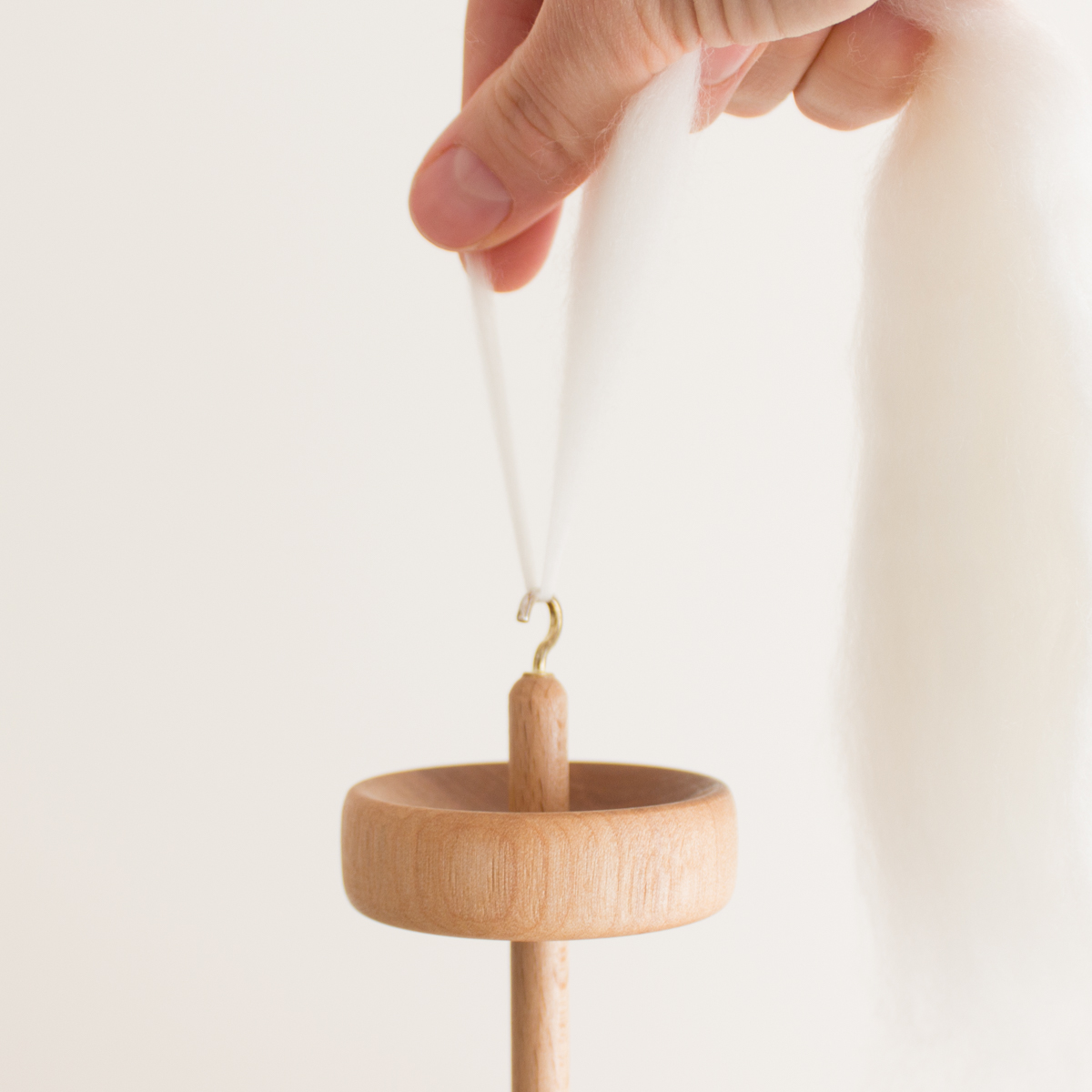How To Spin Yarn: Six Simple Steps
Last week I launched the first Learn to Spin Kit for Loom & Spindle. I shared my journey on learning how to spin yarn (HERE) and some of the frustrations I experienced.
Part of these early frustrations were the result of not having a clear method for spinning yarn on a drop spindle, and not fully understanding how each action influenced the yarn I was spinning.
Over time one key insight emerged, I found it much easier to regulate the yarn I was producing when I had an understanding of the process and mechanics of making yarn.
The resulting method I developed for the Loom & Spindle Learn to Spin Kit builds on this by teaching you the sequence for spinning yarn on a drop spindle, and importantly explaining how each action can be used to control the process of forming a yarn - giving you confidence through understanding!
I’ve shared my method on how to spin yarn on a drop spindle below and included a FREE ‘take-home’ copy for you to download. You’ll find the link at the end of the post.
Good luck!
PS: Remember, your first yarns might not be exactly what you envisioned, but they will be your most important lessons.
How To Spin Yarn: Six Simple Steps
Step 1
Draft a small amount of fibre and loop it under the spindle’s hook.
Using your thumb and index finger, PINCH together the pre-drafted end and main fibre supply.
Step 2
Spin the spindle storing TWIST in the length of fibre between the hook and your fingertips.
PARK the spindle.
Step 3
With two hands, DRAFT from the fibre supply using your thumbs and index fingers. Carefully allow twist to enter the newly drafted fibre.
When the twist energy reduces, pinch the fibres and stop any further twist entering the fibre supply.
Step 4
Repeat steps two and three until the length of yarn is no longer comfortable to manage.
Step 5
Remove the yarn from the hook and wind it around the shaft of the spindle, leave enough length to wrap the yarn over the whorl and under the hook.
Step 6
Repeat the PINCH-TWIST-PARK-DRAFT sequence for the remaining fibre supply.
As the yarn forms, you will need to monitor the fibre carefully for your intended characteristics –Yarn weight, optimal twist, etc.
THE PINCH-TWIST-PARK-DRAFT SEQUENCE
PINCH – The action of locking the fibres between your fingers to hold the twist energy back from the fibre supply.
TWIST – The energy added to the fibre when the you turn or spin the spindle. The twist holds the fibres together in the forming the yarn.
PARK – Refers to the action of setting down and securing the spindle so you have both hands free to draft the fibre. Suggestions for parking the spindle include holding the shaft of the spindle under your arm or between your knees.
DRAFT – This is the process of thinning the fibre supply by drawing fibres apart lengthwise. A suggestion for beginner spinners is to use two hands to draft the fibre. The hand closest to the spindle controls the amount of twist that enters the fibre supply. The other hand controls the draft, how much fibre is drawn out of the fibre supply.
REATTACHING THE FIBRE SUPPLy
It’s likely at some stage during the spin you’ll need to reattach the fibre supply to the forming yarn. This can be challenging at first but with practice you’ll gain confidence.
To reattach the fibre, begin by untwisting the last bit of spun fibre. Pinch behind the unspun end so the twist can’t re-enter the fibre. Add any extra twist to the length of yarn behind your pinching fingers. This extra twist will be needed to reattach the fibre supply.
Place the drafting end of the fibre supply onto unspun end. Pinch the two ends together and gently draw back the fibre supply. Allow the twist to enter the drafting zone, locking the unspun end and fibre supply together.
THANKs FOR READING!
This method is also available as a neat little PDF package.
Click the button below and get your FREE copy!
SAMPLE
Share your work, #loomandspindle











